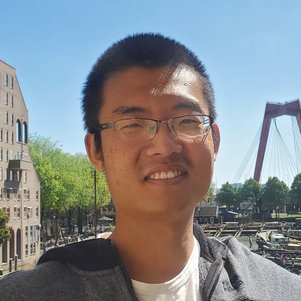In Geomatics it is possible to represent the location of any point in space in a point cloud. The big question is how to organize and classify the enormous amount of data that this produces in such a way that it is also usable. In his PhD research, Haicheng Liu proposes nD-PointCloud as the best method for representing spatial data.
3D scanners can scan and display spaces and surfaces in the form of point clouds, which represent vast amounts of information. Each point not only represents a coordinate on the map, but can also have a classification. For example, a point on a wall is different from a point in a floor. It is even possible to link a completely different dimension to it, such as time, or attributes such as flow direction and flow rate. Collectively, this produces enormous amounts of data. For example, it takes roughly a quadrillion points to accurately represent the map of the Netherlands in 3D.
How can one find his way in such masses of data that refer to many dimensions (nD)? Ordering the points by “Level of Importance” is the first step. “You have to make a selection, otherwise the computer can't handle it”, explains Liu. “An nD-PointCloud can translate this selection into a general representation of spatial data.”
More accurate and faster
Organizing data from a point cloud is done with a database management system, in which points are saved as a file. It takes an extraordinarily good index — e.g., a tree structure — to be able to select those billions of points for use. The disadvantage of database management systems is that they are designed for solving 2D or 3D problems, not for multidisciplinary (nD) data indexing. Therefore dynamic phenomena, such as flood forecasts, and details from a dataset are not easy to map. “The nD-PointCloud solution can do this much better because it does not depend on a uniform distribution of the points”, says Liu. “An innovative nD histogram describes where the points are in space and ensures that the space is dissected more intelligently. This greatly improves the accuracy and speed.” According to his own estimates, the innovative method is ten times faster.
Continuity
Liu’s innovative approach also ensures continuity in the “Level of Importance”. This can be clearly seen when zooming in on one piece of a 3D map, whereby the most important points are removed much more smoothly from the whole. It is not done in a separate block, as with existing solutions, but as part of the whole. Liu developed a special selection algorithm for this.
Finally, his innovative method also makes it possible to extract very specific objects from a 3D map. Until now, surveyors had also been dependent on extracting a rectangle of points. Unfortunately, that is not an accurate method if the object of study is a winding road or river. A so-called polytope query can view such an object separately. This also makes it easier to view from other perspectives or to provide insight into flood risks. “It is no longer necessary to select points one by one”, says Liu. “You can solve complex questions a hundred times faster that way.”
This can be useful not only for complex landscape issues, but also for the development of other new IT solutions such as new 3D navigation systems. “High-tech solutions, such as cloud computing platforms, can boost the solution in the future, thereby benefiting many more users”, says Liu.
Published: June 2022
More information
- Haicheng Liu defended his thesis ‘nD-PointCloud Data Management: continuous levels, adaptive histograms, and diverse query geometries’ on 22 June 2022.
- PhD thesis 'nD-PointCloud Data Management: continuous levels, adaptive histograms, and diverse query geometries’.

Haicheng Liu
- H.Liu-6@tudelft.nl
-
Link to the staff page
